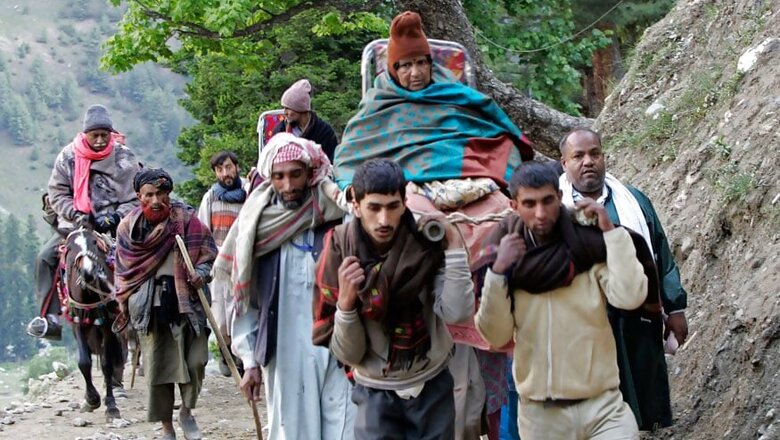
views
Jammu: At Jammu base camp, passion of Amarnath yatris is contagious. Amid chants of 'Har Har Mahadev' and ‘Bhole baba ne Bulaya hai, hum to jayenge' (Lord Shiva has called us, and we will go), the yatris finish their spot registration. Once registration is done, one can be part of the convoy which leaves for Amarnath shrine at 3am next day.
After registration, the day is spent relaxing at the camp, singing bhajans and prayers in praise of Lord Shiva. Every now and then, a patriotic song finds place in the religious atmosphere. People from northern, western and some parts of eastern India come together to create jugalbandi of sorts.
According to Amit from Nagpur, who has been visiting the shrine every year for a decade now, this daylong wait is the reason why many travel straight to the Pahalgam base camp without waiting for the convoy. It saves them the time and the crowded Jammu camp.
Every day around 3500 yatris leaves for Amarnath around 3am with a CRPF cover. But this protection is only for the yatris traveling to and from Amarnath. The cover goes off when the yatris wander off to see the beauty of Kashmir. Of the total 1.5 lakh pilgrims who visit the Amarnath Shrine, only about 50,000 come to the Jammu base camp.
As I travel from Jammu, just a day after seven yatris were killed in a terror attack, the road appears like a cantonment. Mobile internet has been suspended. The only points from where I could find out what’s happening in the valley are the many Bhandaras (makeshift community kitchens for the yatris) which serve free food and refreshments to the pilgrims.
At the ‘Baba Barfani Vishal Bhandara’ set up by a group of people from Sirsa in Haryana, I meet Lalit Chug. He is one of the organisers of the Bhandara and had crossed Anantnag area about an hour before the attack. According to him, breaking the security cordon and going for sightseeing is common. “Those who come to Amarnath from far off areas want to see Dal Lake, Sonamarg and buy Kashmiri stuff,” he says.
At the Bhandara, apprehensions remain whether yatris would continue to come after they get the news of the attack.
We keep moving ahead, from one check post to another. Forces are now very strict about not allowing any vehicle to move after sunset.
As we cross the Jawahar Tunnel and enter Kashmir, the number of check points increases. Near Anantnag, it looks like a fortress.
Four days on since the attack, the yatra continues, unabated, amidst the encounters, strikes and occasional stone pelting in certain pockets of Kashmir. No stone pelting is targeted at the yatris. One hears tales of cooperation and support of the locals. Terrorists succeeded in killing seven innocent pilgrims but they failed in terrorizing people or dividing Kashmiris and rest of India.




















Comments
0 comment